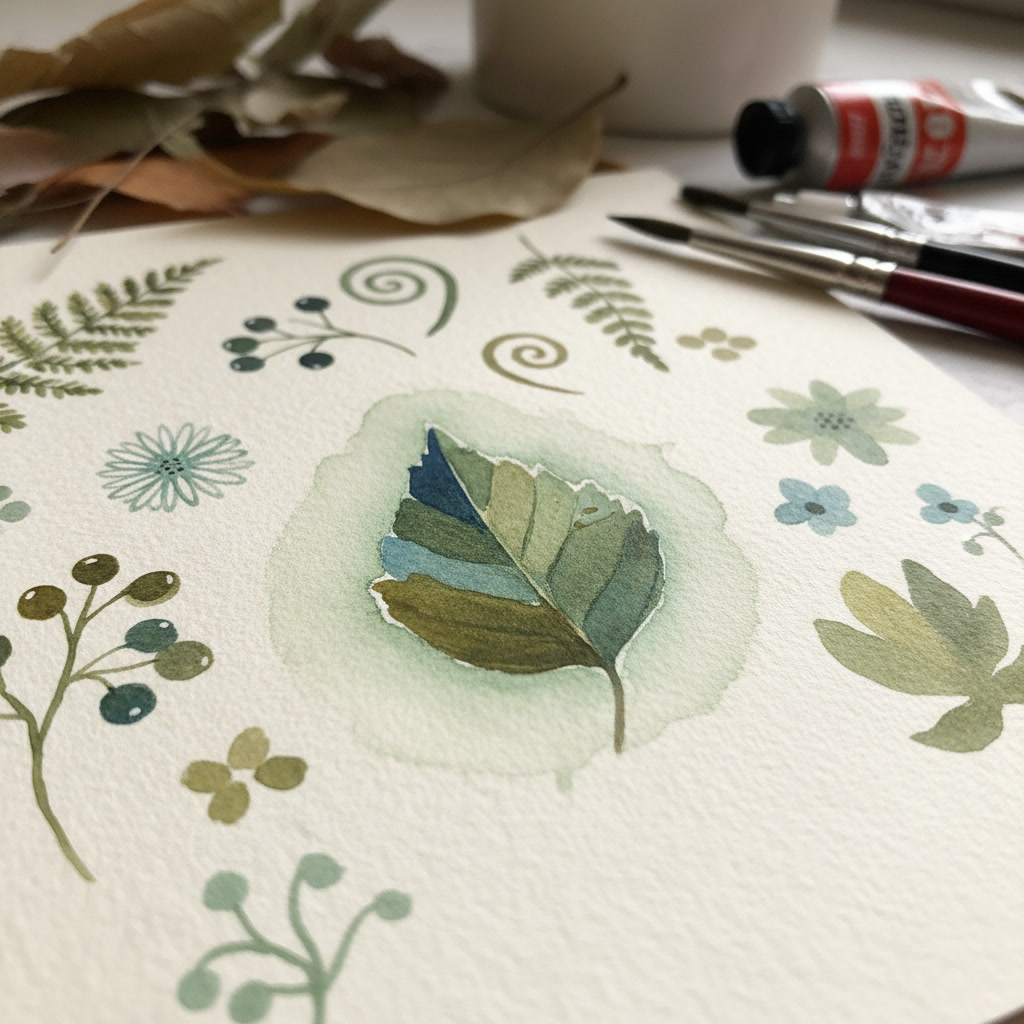Behind every fabric we create lies a vast collection of sketches—our living archive of ideas, gestures, and patterns. At Lily & Inc Studio, our sketchbooks are more than reference tools; they're creative ecosystems. Each page captures not only what we saw, but how we felt when we drew it.
Our motif library didn't appear overnight. It grew one mark at a time—across seasons, projects, and years of disciplined observation. The goal has always been the same: to build a visual vocabulary that never expires.
The Purpose of a Motif Library
A motif library is the foundation of any textile designer's language. Ours holds thousands of elements—hand-drawn leaves, architectural lines, textures from found objects, and even abstract forms born from accidents.
While many digital artists build asset folders, we believe in a tactile archive. Paper sketchbooks capture spontaneity in a way no digital brush can. A flick of ink, a dry watercolor edge, or a smudged pencil mark carries human evidence. These imperfections later become the soul of our patterns.
We often say: our motifs aren't stored—they're cultivated.


Drawing as Daily Practice
The heart of our textile motif design process is routine. Every designer in our studio keeps a personal sketchbook dedicated to daily mark-making. Some days the pages are full of structured studies; others are chaotic explorations of rhythm, tone, and movement.
We draw not for output but for observation. Even five minutes a day adds up to hundreds of motifs a year. That consistent repetition trains the hand to see form differently—to find patterns in shadows, negative space, or even folded paper.
Our best motifs often come from the sketches we almost threw away.
From Field Sketch to Design Element
Many of our motifs begin in the field—drawn from nature, architecture, or found textures. When we return to the studio, we sort them into loose categories: organic, geometric, abstract, and hybrid.
From there, we refine. A quick sketch of a seed pod may become a series of stylized shapes; a vine study might turn into a repeating border. We scan the strongest marks and trace them digitally, cleaning edges while preserving character.
Every motif earns its place through testing—how it repeats, how it scales, and how it feels on cloth. The process is slow, but that's what gives the library longevity.


The Balance Between Consistency and Evolution
Our motif library serves as both a foundation and a springboard. Some motifs reappear across collections, subtly evolved in scale or texture. This continuity helps define our studio's visual DNA.
Yet, we're not afraid to let the archive evolve. Each new season adds variation—different materials, tools, or methods of observation. We might switch from graphite to ink, from brush to printmaking, to challenge our habitual gestures.
This rhythm of continuity and change is what keeps our creative sketching for patterns alive and relevant.
The Role of Imperfection
If you've followed our work, you know how much we value imperfection. The motif library is where that philosophy begins. We intentionally keep sketches with uneven lines, ink bleeds, and off-balance forms. Those quirks become texture when translated into fabric.
A perfectly symmetrical motif can feel sterile; one drawn by hand feels alive.
Cataloguing Chaos — Our Archival Method
Every few months, we spend time archiving new motifs. It's not glamorous—it's scanning, labeling, tagging, and organizing—but it's essential. Our system blends analog and digital methods.
Each motif is photographed or scanned at high resolution, tagged by category, mood, and potential application. We also keep a printed "motif wall" in the studio—a visual grid that helps us spot gaps and connections.
It's an intuitive archive, more like a living map than a database. The purpose is not control—it's rediscovery.
Turning Sketches Into Reusable Assets
Once digitized, motifs enter our pattern development system. We test how they behave in different compositions—mirrored, rotated, or layered. Some work as lead motifs; others serve as fillers or transitions.
We keep extensive notes on scale and proportion because a motif's magic can vanish if it's used too large or too dense. In this stage, our designers experiment freely, often discovering new relationships between old sketches.
This cross-pollination is how a single leaf drawn five years ago might find new life in a modern print today.

Why Longevity Matters in Motif Design
Trends come and go, but timeless motifs endure. A strong motif library gives us creative independence—we can revisit, reinterpret, and recontextualize without chasing what's fashionable. That's the core principle behind our slow fabric philosophy: designing for continuity, not consumption.
Our motifs are like heirlooms. They gather history with use.
The Emotional Archive
Beyond the technical, our sketchbooks serve as emotional records. We can look back at a line and remember the weather that day, the conversation in the studio, or the place that inspired it. Those invisible details give weight to the work.
This emotional connection to process is what keeps us grounded when projects get fast or digital demands intensify. The sketchbook reminds us: design is made by hand, for the senses.
Looking Ahead — Expanding the Library
As our collections evolve, so does the archive. We're currently exploring mixed media—combining hand-pressed plants with digital drawing layers—to create motifs that feel both ancient and new.
We see our motif library as an inheritance to our future selves—a growing atlas of form, line, and memory.
Curious about how we turn these sketches into finished fabrics?
Contact Lily & Inc Studio to collaborate on your next textile project or explore our design philosophy to understand our process.
Work with us

